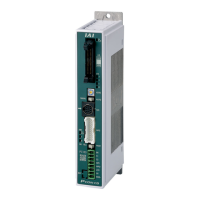Precautions for Handling
Intro-8
ME0342-4B
Precautions for Handling
1. Make sure to follow the usage condition, environment and specification range of the product.
In case it is not secured, it may cause a drop in performance or malfunction of the product.
2. Use the correct teaching tool.
Refer to the following item and use compatible tools for PC software and teaching pendant
usable for this controller.
Refer to [2.1.2 Teaching tool]
3. Back up data in order to be prepared for a breakdown.
Non-volatile memory is used for backup memory of this controller. Registered position data and
parameters are written in this memory and backed up. Therefore, these data will normally not be
lost even if the power is turned off. However, be sure to save the latest data to enable a quick
recovery process in case this controller needs to be replaced with a substitute due to
breakdown, etc.
How to save
(1) Save to an external memory or a hard disk using PC software
(2) Record position table and parameters in writing
4. Set the operation patterns.
This controller processes 8 types of control logics (including 6 types of PIO patterns and
2 types pulse train control) to meet various ways of usage, and changes the role of each
PIO signal following the selected control logic.
1) In PIO specification of PCON-CB/CFB, there are 6 types of the PIO patterns available to
choose from.
2) For Pulse Train specification of PCON-CB/CFB, not only 2 types of the pulse train control
modes, but also 6 types of the PIO patterns are available.
3) In PIO specification of PCON-CBP, not only the types of the force sensor use pressing
modes, but also 6 types of the PIO patterns are available.
The setup can be performed by using the parameter No.25 “PIO pattern selection”.
Refer to [2.2 Operation Modes and Functions] and [6.1.2 [18] PIO Pattern Select].
The PIO pattern is set to “0” (Standard Type) when the unit is delivered. Set the operation
pattern setting to the logic that suits to your use after the power is turned on.
Warning
● Please note it is very risky when the control sequence and PIO pattern setting do not
match to each other. It may not only cause the normal operation disabled, but also may
cause an unexpected operation.
Precautions for Handling
ME0342-4B Intro-9
5. Clock Setting in Calendar Function
Alarm 069 "Real Time Clock Oscillation Stop Detected" may occur when turning the power on
for the first time after delivery. In that case, set the current time with the teaching tool.
When fully charged, time data can be retained approximately 10 days after the power is turned
OF F.
At shipment, time will be set but the unit will not be fully charged. Therefore, even if the above-
mentioned number of days has not passed from shipment, the time data may be lost.
6. Attempt not to exceed the actuator specifications in the pulse train control mode.
In Pulse Train Control Mode, the operation is performed corresponding to the input pulse.
• Input Pulse Value → Moving distance
• Input pulse frequency → Velocity
• Change in Input Pulse Frequency → Velocity change and acceleration/deceleration
Do not use the actuator above the specifications (for stroke, maximum velocity, maximum
acceleration/deceleration) for the commands of the movement amount, velocity and
acceleration/deceleration from the host controller (PLC). Doing so may cause an error or
malfunction.
The pressing operation velocity should be set to the rated pressing velocity when it is to conduct
the pressing operation. Pressing with velocity not at the rated pressing velocity could end up
with pressing force different from that shown in [9.4.3 Push Force / Gripping Force and Current
Limit Value]. Also, operation in velocity higher than the rated pressing velocity could cause an
error or malfunction.
Refer to [9.4 List of Specifications of Connectable Actuators] for the specifications and rated
pressing velocity for each actuator.
7. Regarding Serial Communication in Pulse Train Control Mode
In pulse train control mode, actuator operation is unavailable through serial communication.
In the pulse train control mode, the actuator operation is unavailable through serial
communication. However, it is possible to monitor the current status.
8. Actuator would not operate without servo-on and pause signals.
(1) Servo ON Signal (SON)
Servo ON signal (SON) is selectable from “Enable” or “Disable” by using a parameter.
It is settable by parameter No.21 “Select enable/disable servo ON input”.
Refer to [6.1.2 [15] Select enable/disable servo ON input].
If it is set to “Enable”, the actuator would not operate unless turning this signal on.
If parameter No.21 is set to “1”, SON requirement is disabled.
If it is set to “Disable”, the servo becomes on and the actuator operation becomes enabled
as soon as the power supply to the controller is turned on and the emergency stop signal is
cancelled.
This parameter is set to “0” (Enable) at delivery. Have the setting that suits the desired control
logic.

